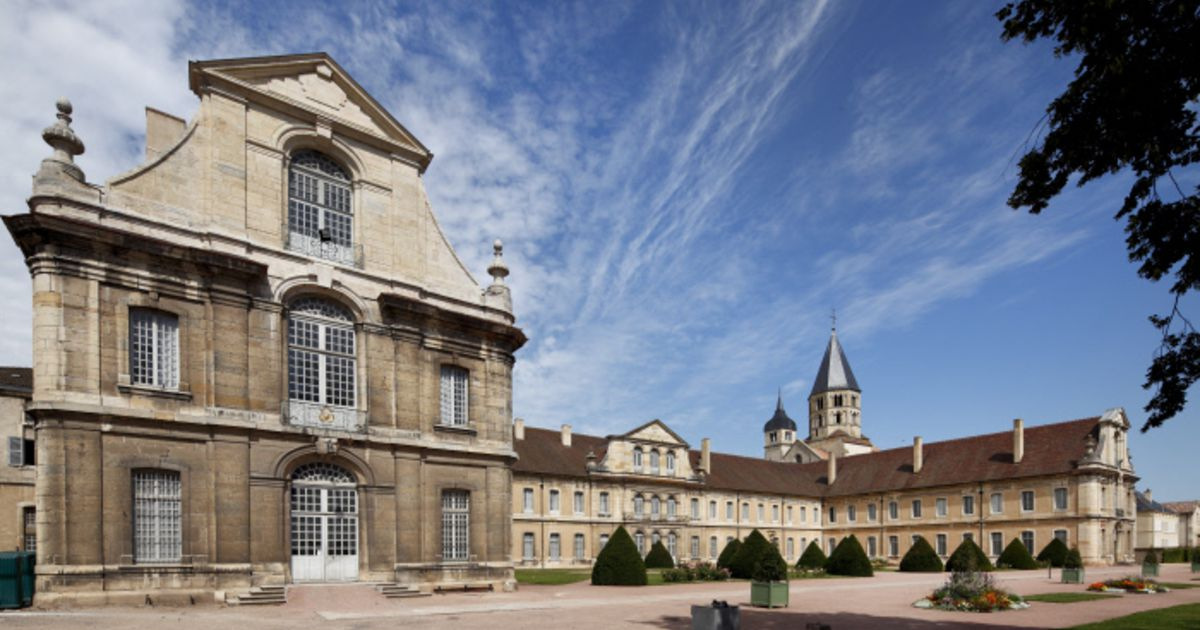Cluny Abbey architecture stands as a monumental testament to the grandeur of medieval construction, representing not only the skill of its builders but also the spiritual ambitions of the Benedictine order. Founded in the 10th century in the Burgundy region of France, Cluny Abbey grew to become one of the most influential monastic centers in Europe. Kenneth Conant’s meticulous research during the 1920s aimed to revive the lost beauty of what was once the largest building in Europe, using architectural sketches and early photographs to reconstruct its rich history. As modern audiences explore its intricate designs through 3D models, they are afforded a unique glimpse into the architectural history that the abbey embodies, connecting the past to the present in an engaging manner. The devastation wrought by the French Revolution wiped away much of its original splendor, but the legacy of Cluny Abbey architecture persists, inspiring both scholars and enthusiasts alike.
The architectural heritage of Cluny Abbey represents a pivotal chapter in the story of medieval structures, showcasing the grandeur of Romanesque design that captivated generations. Its formation marked a crucial transition in ecclesiastical architecture, influencing numerous other constructions throughout Europe. Kenneth Conant’s groundbreaking efforts to digitally reconstruct the abbey have brought to light various elements like the ornate capitals and structural layout that once defined its magnificent presence. The exploration of Cluny’s past through various modern techniques, including 3D modeling, offers insights into a world that has long been obscured by time and turmoil. By examining this blend of innovation and historical significance, we can appreciate the rich tapestry that is woven into France’s architectural legacy.
The Architectural Legacy of Cluny Abbey
Cluny Abbey, specifically Cluny III, was an architectural marvel designed during the height of medieval architecture. As a product of the Benedictine reform movement, it represented the pinnacle of monastic construction in Europe. Completed in the 12th century, Cluny III was not only one of the largest churches of its time but also a significant pilgrimage site, influencing church architecture across France and beyond. Its grandeur was exemplified through its vast dimensions, soaring ceilings, and intricate decorations, showcasing an era of artistic expression and ecclesiastical power.
However, the abbey’s existence came to an abrupt end during the French Revolution when it was dismantled for its building materials. The loss of Cluny Abbey marks a pivotal moment in architectural history, as it symbolizes the transition from medieval ideals to modernity. This dramatic shift has galvanized scholars and architects, like Kenneth Conant, to investigate and reconstruct its architectural features through meticulous studies and advanced technologies, ensuring that the legacy of Cluny Abbey endures despite its physical absence.
Frequently Asked Questions
What role did Kenneth Conant play in the study of Cluny Abbey architecture?
Kenneth Conant significantly contributed to Cluny Abbey architecture by reconstructing its design through historical research in the 1920s. He meticulously studied the remaining structures and conducted extensive excavations, aiming to visualize the abbey as it stood in the Middle Ages, which has been crucial for understanding medieval architecture.
How did Cluny Abbey architecture influence medieval structures in Europe?
Cluny Abbey architecture was a pivotal model for medieval structures across Europe. Its grand design and significant scale inspired countless churches and monasteries, establishing architectural standards that emphasized expansive naves and intricate ornamentation that defined Romanesque architecture.
What technologies are being used to recreate Cluny Abbey architecture today?
Modern technologies like 3D modeling and photogrammetry are used to recreate Cluny Abbey architecture today. These methods allow historians and architects to visualize and interact with the abbey’s structure, providing insights into its design and layout that were not possible with traditional methods.
What happened to Cluny Abbey after the French Revolution?
After the French Revolution, Cluny Abbey, once a magnificent structure, was largely demolished and sold for scrap, leaving behind only remnants like the south transept and a few capitals. This destruction sparked renewed interest in its architectural history, leading to efforts like those of Kenneth Conant to reconstruct its former glory.
What features of Cluny Abbey architecture are most notable?
Notable features of Cluny Abbey architecture include its massive scale, intricate sculptural details on the capitals, and innovative structural techniques that influenced medieval church designs. The abbey’s design embodied the monastic ideals of the time, showcasing grandeur that was unprecedented in medieval Europe.
How has the interpretation of Cluny Abbey’s capitals evolved over time?
The interpretation of Cluny Abbey’s capitals has evolved significantly, with scholars like Kenneth Conant initially trying to identify cohesive narratives among the designs. Recent studies suggest diverse origins for these capitals, reflecting different artistic styles and interpretations, making them crucial to understanding Romanesque sculpture.
What can visitors experience in exhibitions about Cluny Abbey architecture?
Visitors to exhibitions on Cluny Abbey architecture can experience interactive 3D models, detailed photographs, and historical reconstructions that visualize the abbey’s grandeur. These displays offer insights into both the architectural styles of the abbey and the historical context of medieval architecture.
Why is Cluny Abbey architecture considered significant in architectural history?
Cluny Abbey architecture is significant in architectural history for its monumental scale and its role in shaping monastic life during the medieval period. It represents a paradigmatic shift in architectural design, paving the way for future developments in Gothic and Romanesque architecture.
| Key Aspects of Cluny Abbey Architecture | Aspect | Details | Significance | ||
|---|---|---|---|---|---|
| Construction | Started in 1088, completed over centuries. | Largest Benedictine monastery and influential in medieval architecture. | |||
Summary
Cluny Abbey architecture represents a pinnacle of medieval construction and innovation. As the largest building in Europe for over 700 years, Cluny Abbey showcases the grandeur of Gothic design and the depth of monastic life. Its systematic study, particularly through the work of Kenneth Conant, reveals how architects can reconstruct the past, offering a glimpse into the majestic structure long lost to time. The recent exhibition advises on the evolution of architectural understanding and technology, emphasizing the enduring legacy of Cluny Abbey architecture.
